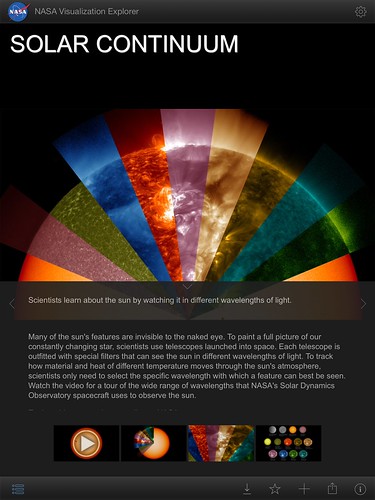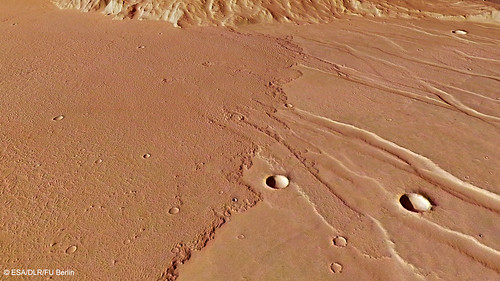Tuesday, March 18, 2014
Wednesday, March 12, 2014
Δεν Διαβάζω Ματωμένα Βιβλία
Tuesday, March 11, 2014
NASA Visualization Explorer Now Available For All iOS Devices

NASA Visualization Explorer Now Available For All iOS Devices, originally uploaded by NASA Goddard Photo and Video.
NASAViz Story Solar Continuum on the iPad
Download video:
svs.gsfc.nasa.gov/vis/a010000/a011400/a011418/index.html
NASA Visualization Explorer Now Available For All iOS Devices
The popular NASA Visualization Explorer app, first launched for the iPad in July 2011, is now available for the iPhone and all devices running iOS 5.1+
A new universal version of the app is now available for download in the iTunes app store. Click here: svs.gsfc.nasa.gov/nasaviz/ to download the app
The app, which features the data visualization work of NASA's Scientific Visualization Studio, Earth Observatory and others, publishes two stories per week about the full range of NASA's astrophysics, planetary, heliophysics and Earth science missions.
Read more:
1.usa.gov/1h9Bkf0
Join the NASAViz Community on Facebook: www.facebook.com/NasaViz
Follow us @NASAViz: twitter.com/#!/nasaviz
NASA's Goddard Space Flight Center enables NASA’s mission through four scientific endeavors: Earth Science, Heliophysics, Solar System Exploration, and Astrophysics. Goddard plays a leading role in NASA’s accomplishments by contributing compelling scientific knowledge to advance the Agency’s mission.
Credit: NASA/Goddard
NASA image use policy.
NASA Goddard Space Flight Center enables NASA’s mission through four scientific endeavors: Earth Science, Heliophysics, Solar System Exploration, and Astrophysics. Goddard plays a leading role in NASA’s accomplishments by contributing compelling scientific knowledge to advance the Agency’s mission.
Saturday, March 8, 2014
Daedalia Planum
Close-up view of the two dominant lava flows that reach the foot of the highland terrain (seen at the top of the image in this orientation). The older of the two eruptions produced the smooth lava surface to the south of the island (right), which later experienced extensive faulting. The younger lava flow (left) has a rougher texture and overlies the faulted lava plain, and therefore occurred later, with some of the lava flowing into the troughs. This region was imaged by the high-resolution stereo camera on ESA’s Mars Express on 28 November 2013 (orbit 12 593), with a ground resolution of 14 m per pixel.
Credit: ESA/DLR/FU Berlin

